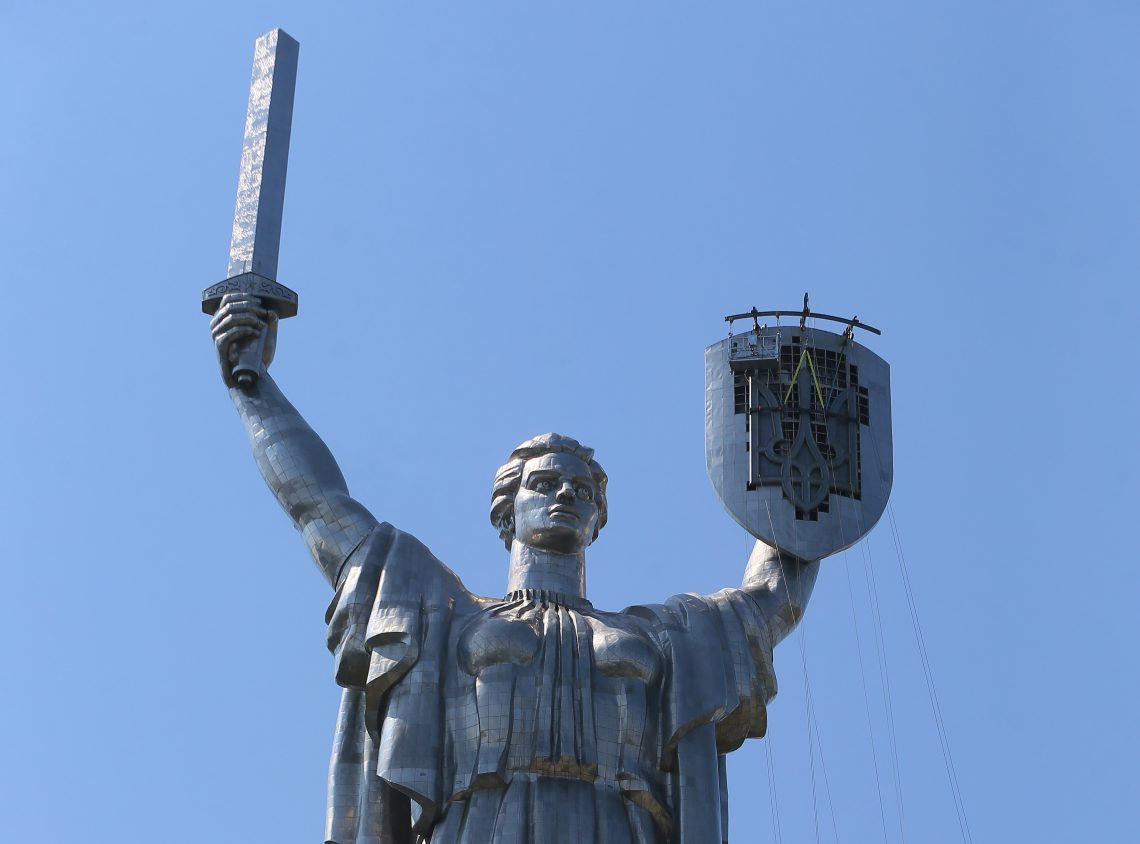Only two scenarios for Russia’s war against Ukraine
There can be no such thing as a “draw” to resolve the Russia-Ukraine conflict. Any outcome other than victory for the Ukrainians, as they define it, will be a victory for the Kremlin.

In a nutshell
- Any supposed draw in the conflict would be a win for Russia
- The long-term consequences of a Ukrainian defeat are often understated
- Only the West, rather than either warring party, can decide the victor
Predicting when and how Russia’s war against Ukraine will end is a very difficult challenge. The basic scenarios may seem similar to a football match: a Ukrainian victory, a Russian victory, or a draw.
However, the situation is much more complex than a football match. Sports are played according to clear rules, recognized by both teams. Compliance with these rules is controlled and enforced by a referee, whose decisions are accepted by all sides. In football, what is considered a win, a draw and a loss – the difference in goals scored – is clearly defined and respected by both teams. Moreover, a football match (although it may be a big deal in some cases) is far from an existential, life-or-death affair. The consequences of any one outcome usually do not have major implications for other important areas – like the fates of dozens of countries and the lives of hundreds of millions of people, including the security, independence and territorial integrity of those states and their citizens.
Given the public discourse and the attitudes of many Western diplomats and intellectuals over the present war, it increasingly appears that these differences are not recognized by those who (consciously or not) push for a compromise in Ukraine, a kind of “draw.” Many continue to do so, no doubt in good faith and well-intentioned. But history offers abundant evidence that the road to hell is paved with good intentions.
So let us first try to define what can be considered a victory for Ukraine, what can be considered a victory for Russia and what can be considered a “draw.”
Ukrainian victory
Ukraine’s victory is the easiest to articulate because Kyiv has clearly defined it and repeatedly emphasized it, mainly through President Volodymyr Zelenskiy. In particular, it means a restoration of Ukraine’s territorial integrity within the pre-2014 borders, future security guarantees, criminal consequences for Russian war crimes and reparations for the material damage caused. Ukrainian membership in NATO and the European Union should also be part of (and a guarantor of) its victory.
Let us add that the legitimacy of these objectives, and accordingly of a Ukrainian victory, is quite strong. They are in accordance with international law, are supported by most of the Ukrainian population and are promoted by legitimate political representatives elected in free and democratic elections.
Russian victory
Victory for Russia is much harder to define, for several reasons. At first, Moscow’s aim in invading Ukraine was to take over the whole of the country and remove its legitimate, democratically elected government. After a blitzkrieg fiasco in the spring of 2022, the goal became taking control of as much of Ukraine as possible, and then annexing four specific regions (Luhansk, Donetsk, Zaporizhzhia and Kherson) to Russia.
Exactly what the Kremlin’s goal is today is not entirely clear. In one sense, the details do not terribly matter. The fundamental, unquestionable goal of President Vladimir Putin’s Russia can be seen from the outset as denying a Ukrainian victory: preventing Ukraine from existing as an independent, sovereign country that not only controls its own territory but also freely decides its future based on the will of the majority of its people. This is the basic objective that Russia is pursuing in Ukraine and which it has been pursuing ruthlessly and aggressively, in contravention of international law – not only today but since at least 2014.
Two outcomes
In this light, there are not three, but only two essential scenarios for the course of Russia’s war against Ukraine. There is no “draw.” Any outcome other than a Ukrainian victory, as they define it, would qualify as a victory for Russia.
At the same time, Ukraine will not be able to win without the help of its Western allies. While already at historically high levels, this assistance remains insufficient to deliver a Ukrainian victory. And, to reiterate, any compromise, frozen conflict or other form of stalemate means a Russian victory.
Neither Ukraine nor Russia will get to decide which of the two possible scenarios is realized. Both sides are doing and will do everything they can to win, and they cannot do much more than they are now doing. Instead, the winner will be decided by the West. The question is whether it will understand that there are only two viable options and help Ukraine further and faster than it has done so far.
Almost a year ago, I wrote about why I do not consider any compromise with President Putin to be a solution to the war. Over the past year, there has been ample evidence suggesting that a “draw” means victory for Russia. Yet the risk of such an outcome has not declined, but rather increased.
Read more by Ivan Miklos
Why compromise with Putin is not the solution in Ukraine
The Russian winter offensive (December 2022 to April 2023) brought Moscow almost no new territorial gains. It did, however, allow Russian forces to dig in, lay minefields and build strong defensive positions such that the current Ukrainian counteroffensive, which began in early June, has so far brought only marginal gains.
The main weakness of the counteroffensive lies in the caution and reluctance of Western allies to equip Ukraine with fighter jets, long-range missiles and more modern tanks and ammunition. The qualitative superiority of Western weapons, the greater motivation of Ukrainian soldiers and the experienced Ukrainian military command mean that Kyiv should have a huge advantage over Russia. However, the latter has the advantages of numbers and of defending the territory at stake. Russia has had enough time to prepare its defenses, and the offensive side is always at a disadvantage.
In this situation, time plays in Russia’s favor. A slow offensive drains human resources (of which Ukraine has much less than Russia), increases the risk of a frozen conflict and raises the pressure to negotiate a compromise.
President Putin’s strategy of stalling for time is clear. The United States is a crucial supplier of military aid to Ukraine, and a victory by former President Donald Trump in the November 2024 U.S. presidential elections would significantly increase the pressure for a “negotiated end to the war.”
False assumptions
An excellent June report by the British think tank Chatham House identified nine fallacies underlying common arguments for a supposed compromise solution to the war in Ukraine. For the sake of illustration, let us mention some of the most widespread ones.
Negotiations are said to be necessary because, after all, wars end at the negotiating table; why not negotiate now to save lives? In fact, wars like this one – in which an entire country is threatened with extinction, and the international order is flagrantly violated – end at the negotiating table only after a definitive defeat of one of the parties. This was the case in both world wars, the American Civil War, and the Napoleonic Wars. Even the Franco-German reconciliation would not have been possible if the Nazis had not been defeated.
Another pitfall is that supporters of compromise implicitly (or sometimes explicitly) assume that the price of peace will include Ukraine giving up part of its territory, such as Crimea; otherwise, it is claimed, Russia would not agree to the deal. This is unacceptable for several reasons. First, Ukraine does not and will not agree to such a deal. It would also be legitimizing a change of borders by force – setting a highly dangerous global precedent. And it would not only jeopardize the future security of Ukraine, but also the entire Black Sea region.
A Ukrainian victory is described in the Western debate as a supposedly maximalist option, while the proponents of compromise are described as realists.
There are also fears that a military defeat of Russia could destabilize the country, and possibly lead to its disintegration. Notably, this concern is more often voiced by countries distant from Russia than by its immediate neighbors, who have firsthand experiences and would be much more affected by any destabilization of Russia. In reality, the military defeat of Russia (or rather of its current ruling regime) is not only in the interest of Ukraine and the international order, but ultimately also in the interest of a better future for the country and its own people.
Finally, another fallacy is the financial argument: that the war needs to be ended through negotiations as soon as possible because it is too expensive. To be sure, it is expensive, but it is also true that a Russian victory will ultimately be much more expensive – not only in terms of direct costs but also indirect costs and consequences.
Shared interests
Russia today makes no secret of the fact that its enemy is not only Ukraine, but the entire Western world. The West has so far provided Ukraine with military and financial aid of about $96 billion – a large sum, but still only 0.2 percent of the annual gross domestic product of these countries, or 4 percent of their annual defense budgets. Moreover, Western countries are only spending these funds because they have in the past ignored Russian threats to their own security.
The attitudes of all those who support a compromise “draw” are based on a shortsighted, narrow assessment of the costs and benefits of potential solutions. If we include in the analysis not only the short-term or economic costs, then victory for Ukraine must be the preferred outcome. This follows not only from a moral point of view but also from the security, financial, economic and social consequences of the war.
It remains uncertain which of the two scenarios will prevail. Yet the nature of the public debate now being conducted in the West suggests that the risk of a “draw” – and therefore, of a Russian victory – is high. Note that a Ukrainian victory is described in the Western debate as a supposedly maximalist option, while the proponents of compromise are described as realists.
Ukrainians do not want to conquer Moscow; they “only” want to expel the aggressor from their territory. They are acting not only in their own interest, but also in the interests of the countries too afraid to help them.









